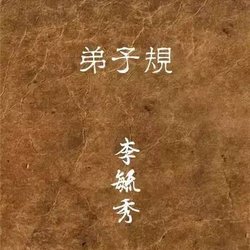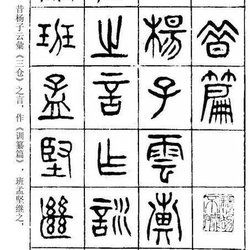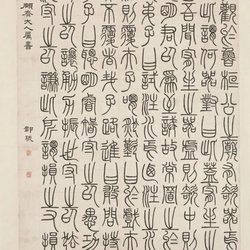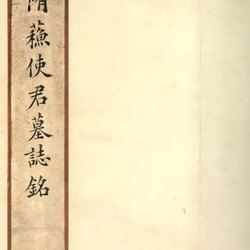If you have narrowed down your choices among Ouyang Xun, Yan Zhenqing, and Liu Gongquan, I would recommend you to choose Yan Zhenqing. Because the fonts and fonts are extended outwards, and the strokes are both square and round, the contrast between the thickness of the strokes is very obvious. Beginners can more intuitively identify the key points and it is easier to master.
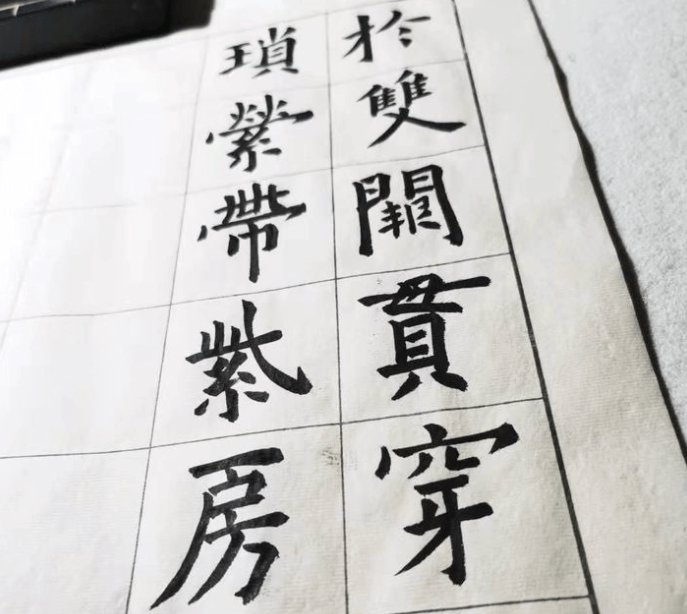
But I think that when choosing subjects to study, it is more important to be rooted in your own preferences and aesthetics, so that you can continue to study more consistently. Although these three calligraphers are highly accomplished, the works of each calligrapher are different from early, middle and late periods, as well as inscriptions and inscriptions. Not all calligraphy inscriptions are easy to master. Therefore, learning calligraphy cannot just stop at practicing Yan style, European style or Liu style. Before that, you need to do more homework and understand some basic knowledge of calligraphy. You can also try to get started with calligraphy from other angles.
Calligraphy began with oracle bones and evolved into large seal script. During the Qin and Han Dynasties, the five calligraphy styles of seal script, official script, regular script, cursive script and running script appeared basically at the same time, instead of the evolution of seal script - official script - regular script - running script and cursive script as everyone thought. process. When you first learn calligraphy, you can also choose from the perspective of seal script, official script, or regular script. You don't have to be limited to a certain style.
1. Xiaozhuan
Learning Xiaozhuan is the best starting point for learning calligraphy. In the initial stage of learning calligraphy, we will ask students to draw a character and a circle. This is to let students learn to control the brush and grasp the lines and space. The essence of it is the refinement of seal script. Moreover, Xiaozhuan is relatively simple to use and the difficulty is relatively low, making it very suitable for beginners.
Here are some inscriptions that I recommend for getting started with seal script:
Li Si's "Yishan Stele"
Li Yangbing's "Three Tombs"
Li Yangbing's "City God's Temple Stele"
Li Yangbing's "Qian Gua Stele"
Wu Rangzhi's "Emperor Wu of Song Dynasty and Zang Tao's Edict"
Wu Rangzhi's "Book of Liang Wujun and Zhu Yuansi"
The reason why it is not recommended to start with Deng Shiru's seal script is because Deng Shiru prefers to write with "a long edge and a thin line, and an astringent line against the front", which is difficult for beginners to complete. If your calligraphy teacher can write Xiaozhuan, it is not a bad idea to start with Deng Shiru's "Bai's Thatched Cottage".
2. Regular script
Many people in today's society have difficulty understanding the content of seal script. Knowing the seal script is also a relatively difficult task and requires a long period of memory. Then starting with regular script is also a good choice.
1. Small regular script
Wei and Jin small regular scripts are one of the foundations of regular script. After learning Wei and Jin small regular scripts, you can continue to learn the small regular scripts of the famous calligraphers of the Tang Dynasty, or you can also learn the small regular scripts of Zhao Mengfu and Wen Zhengming. The two small regular scripts belong to the same line of calligraphy and can corroborate each other. The comparison will be greatly improved. But I don’t recommend that beginners learn Ming and Qing Xiaokai directly.
Recommended inscriptions:
Zhong Yao's "Congratulatory Table", "Power and Life Table", and "Declaration Table"
Wang Xizhi's "Huang Ting Jing", "Le Yi Lun", "Stele of Filial Daughter Cao E"
Some people think that the writing style of "Huang Ting Jing" in small regular script is not similar to that of Wang Xizhi, so there is also a distinction between authenticity and authenticity.
Wang Xianzhi's "Thirteen Lines of Luo Shen Fu"
2. Zhongkai
Starting with Chinese regular script is the most common choice. Tang Dynasty regular script is a peak in the history of calligraphy. Learning Tang regular script is also the only way for every calligraphy learner.
Recommended inscriptions:
Chu Suiliang's "Yin Fu Jing"
This book is a forgery and was created by a master who studied Chu at that time. The calligraphy is of extremely high standard and is an important model for learning regular script.
Chu Suiliang's "Preface to the Holy Religion of the Wild Goose Pagoda"
Yu Shinan's "Confucius Temple Stele"
Ouyang Xun's "Huangpu Birthday Monument"
Ouyang Xun's "Huadu Temple Stele"
Ouyang Tong's "Stele of Master Daoyin"
Jiyong's "Chiyong Zhencao Thousand-Character Essay"
Chu Suiliang's "Monument of Master Meng"
Yan Zhenqing's "Stele of Diligence and Ceremony"
Yan Zhenqing's "Letter to Tell Oneself"
Yan Zhenqing's "Zhushantang Connected Sentences"
It is not Yan's calligraphy. There are different opinions as to whether it is a Tang or Song Dynasty.
Yan Zhenqing's "Duobao Pagoda Stele"
Yan Zhenqing's "Ode to the Renaissance of the Tang Dynasty"
Liu Gongquan's "Mysterious Tower Stele"
Liu Gongquan's "Shen Ce Military Monument"
Xue Ji's "Stele of Zen Master Xinxing"
Among these ancient famous calligraphy, I first recommend "Zhiyong's Thousand-Character Essay" written by Zhiyong, a great calligrapher in the Sui and Tang Dynasties. This is not only an excellent regular script copybook, but also an excellent calligraphy indispensable for enlightenment in cursive script. Zhiyong is the seventh generation grandson of Wang Xizhi and the orthodox successor of Wang Xizhi's brushwork. "Haiyue Quotes" commented: "Zhiyong collected thousands of essays, which are beautiful, round and vigorous, and possess all aspects." Zhiyong's works are upright and peaceful, which not only has the flavor of Tang Dynasty calligraphy, but also captures the essence of Wei and Jin brushwork. Furthermore, by studying all the way, you can carefully observe the calligraphy techniques of the ancients and improve quickly.
There are some famous inscriptions, but I did not recommend them above. Let me explain why:
1. "Magu Immortal Altar" by Yan Zhenqing
This is a representative work of regular script inscriptions. It is also Yan Zhenqing's most accomplished regular script work. However, his calligraphy has matured in his later years, and his strokes are combined with regular script to express his brushwork in a more subtle way, making it difficult for beginners to master his brushwork. The same is true for his other work "Yan Family Temple Stele".
2. Ouyang Xun's "Jiucheng Palace Liquan Inscription"
This stele is relatively famous and has been repaired a lot in later generations. Its characters have slightly lost the characteristics of Ouyang Xun's slender body and straight lines. I think it would be a better way to study after studying Ouyang Xun's "Huangpu Birthday Stele" and his son Ouyang Tong's "Master Daoyin Stele" and then studying "Jiucheng Palace Liquan Inscription". However, some words on the stele are illegible, so some calligraphy teachers tend to let students copy what they wrote. But if you take the Dharma from above and get the Dharma from the bottom, if you read what he wrote, isn't that the same as taking the Dharma from the bottom and getting the Dharma from the bottom?
3. Chu Suiliang’s “Yique Buddhist Niche Stele”
This is an early representative work of his calligraphy, but its style is more similar to Sui steles than Tang regular scripts. It has strong lines and official script strokes, making it difficult for beginners to grasp its stylistic features.
3. Official script
Official script was mainly popular in the Han Dynasty. It is a calligraphy style with distinctive characteristics. It is also a model of ancient quality and clumsy style. Starting from official script, we must grasp the common characteristics of Han Dynasty official script. It is orthodox to first study the official script of the Han Dynasty, and then study the official script of the Ming and Qing Dynasties. Learning methods, here are also several official script inscriptions recommended for everyone
"Zhang Qian Monument"
"Cao Quan Monument"
"Yi Ying Monument"
"Shichen Monument"
"Xian Yu Huang Monument"
"Ode to the Stone Gate"
"Ode to the West"
"Yang Huai Biao Ji"
If your teacher has high attainments in running script and chapter cursive, you can also start with running script and chapter cursive, but this is not mainstream, so I won’t go into details here.


